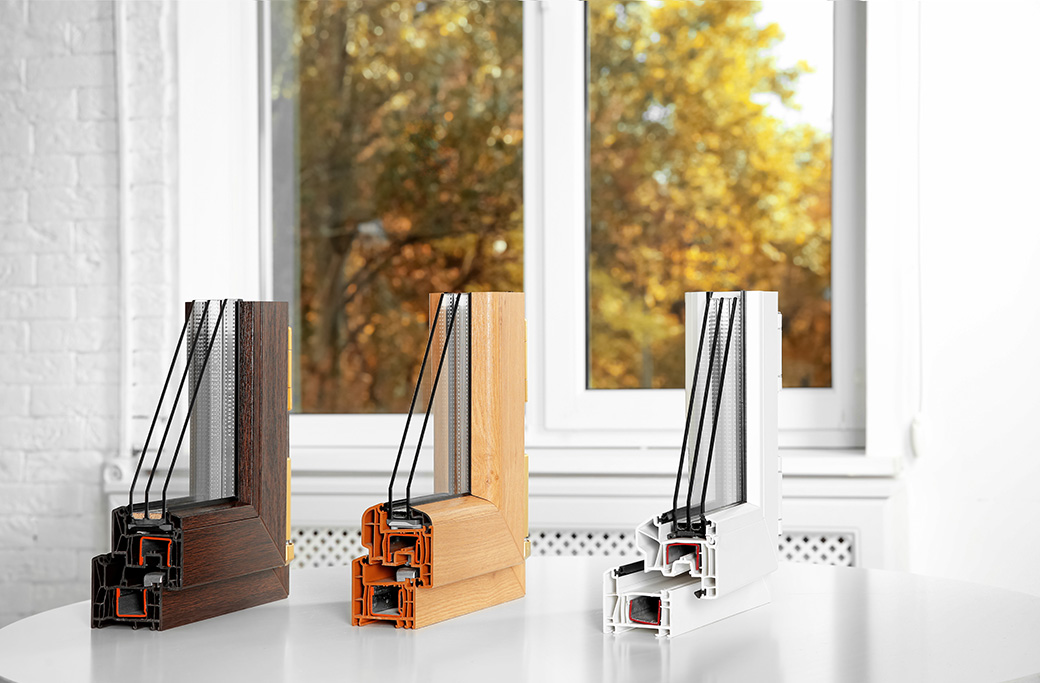Choosing the right window frame material is crucial for any home improvement project. Whether you’re a homeowner looking to upgrade your windows, a DIY enthusiast seeking the best materials, or a construction professional advising clients, understanding the pros and cons of different window frame materials can make all the difference.
Choosing the Right Window Frame Material
Windows do more than just allow light into a room; they contribute to your home’s overall aesthetics, energy efficiency, and structural integrity. The right window frame material can enhance your home’s appearance, reduce energy costs, and even increase its value. Conversely, a poor choice can lead to higher maintenance requirements, reduced comfort, and increased expenses over time.
Selecting the appropriate window frame material involves considering factors like climate, budget, and personal style. It is important to weigh the pros and cons of each option so you can make the best choice for your home.
Wood Frames
Classic Appeal and Eco-Friendliness
Wood window frames have been a popular choice for centuries, thanks to their timeless beauty and natural insulation properties. They offer a warm, traditional look that can enhance the aesthetic appeal of any home. Additionally, wood is an eco-friendly option as it is a renewable resource and can be sustainably harvested.
Maintenance Requirements
However, wood frames require regular maintenance to keep them looking their best. They need to be painted or stained periodically to protect them from moisture and prevent rot. Without proper care, wood frames can become susceptible to warping and insect damage, making them less durable over time.
Susceptibility to Weather
Wood frames are particularly vulnerable to weather conditions. In humid climates, they can swell and warp, while in dry climates, they may crack. Homeowners need to be prepared for the ongoing maintenance that wood frames require to ensure their longevity.
Vinyl Frames
Affordability and Low Maintenance
Vinyl window frames are known for their affordability and low maintenance requirements. Made from PVC (polyvinyl chloride), these frames are resistant to moisture and do not require painting or staining. This makes them an attractive option for homeowners seeking a cost-effective and hassle-free solution.
Energy Efficiency
Vinyl frames are also energy-efficient, providing good insulation that helps keep your home warm in the winter and cool in the summer. This can lead to lower energy bills and increased comfort year-round.
Limited Color Options
One drawback of vinyl frames is their limited color options. They typically come in white or beige, which may not suit everyone’s aesthetic preferences. While some manufacturers offer custom colors, these options can be more expensive and may fade over time.
Aluminum Frames
Strength and Slim Profiles
Aluminum window frames are prized for their strength and durability. They can support large panes of glass, allowing for sleek, slim profiles that provide a modern, minimalist look. This makes them a popular choice for contemporary homes and commercial buildings.
Resistance to Weather
Aluminum frames are highly resistant to weather conditions, making them suitable for various climates. They do not warp or swell, and they require minimal maintenance.
Potential for Condensation and Heat Loss
However, aluminum is a poor insulator and can lead to condensation and heat loss. To mitigate this, many aluminum frames come with thermal breaks—materials that reduce the transfer of heat and improve energy efficiency. Despite this, aluminum frames are generally less energy-efficient than other materials.
Fiberglass Frames
Durability and Energy Efficiency
Fiberglass window frames are known for their exceptional durability and energy efficiency. Made from reinforced plastic fibers, these frames are strong, stable, and resistant to warping, swelling, and rotting. They provide excellent insulation, helping to keep your home comfortable and energy-efficient.
Versatility
Fiberglass frames can be painted in various colors, allowing for greater customization to match your home’s style. They can also mimic the appearance of wood, providing the aesthetic appeal of wood frames without the high maintenance requirements.
Higher Upfront Cost
The primary drawback of fiberglass frames is their higher upfront cost. They tend to be more expensive than vinyl or aluminum frames. However, their long lifespan and low maintenance needs can make them a cost-effective choice in the long run.
Comparing Window Frame Materials
Choosing the right window frame material is a significant decision that can impact your home’s appearance, comfort, and energy efficiency. Each material has its own set of benefits and drawbacks, so it’s essential to consider your unique needs and preferences.
Wood frames offer classic appeal and eco-friendliness but require regular maintenance. Vinyl frames are affordable and low-maintenance, with good energy efficiency but limited color options. Aluminum frames provide strength and sleek profiles with weather resistance but can lead to condensation and heat loss. Fiberglass frames are durable, energy-efficient, and versatile but come with a higher upfront cost.
When selecting a window frame material, consider factors like your local climate, budget, and desired aesthetic. If you’re still unsure which material is best for your home, contact Vermillion Construction for professional advice and window installation services. Our team can help you make an informed decision and ensure your windows are installed to the highest standards.

